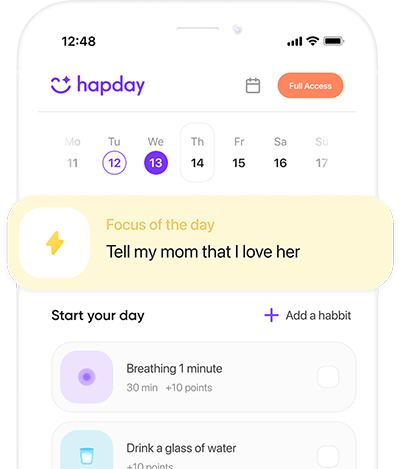Public speaking—just the thought of it can make your heart race, your palms sweat, and your mind draw a blank. For many people, the fear of public speaking is so intense that it ranks right up there with fears of spiders, heights, and even death! But here’s the good news: the fear of public speaking isn’t something you have to live with forever. With the right approach and practice, you can transform that anxiety into confidence and even find joy in speaking before an audience.
Studies show that around 73% of people experience some form of public speaking anxiety, according to the National Institute of Mental Health. But there’s hope—research published in Behavior Therapy found that with focused practice, 91% of participants reduced their speaking anxiety and improved their performance. So if the thought of giving a speech or presenting makes you break out in a cold sweat, know that you’re not alone, and overcoming it is entirely possible.
In this guide, we’ll dive into practical, proven techniques to help you manage public speaking anxiety and develop skills that will make you a stronger, more effective speaker. Let’s get started on turning nerves into strength and fear into confidence.
Understanding the Fear: Why Do We Get Nervous About Public Speaking?
First, let’s take a look at why public speaking triggers such intense anxiety for so many of us. When you stand in front of an audience, all eyes are on you, and that can feel vulnerable. Our brains often interpret this attention as a “threat,” releasing adrenaline and stress hormones that prepare us for a fight-or-flight response—even though we’re not in actual danger.
Common Fears Associated with Public Speaking:
- Fear of Judgment: Worrying that the audience will judge you or criticize your performance.
- Fear of Failure: The fear that you’ll make mistakes, stumble over your words, or forget what to say.
- Perfectionism: Feeling that every word must be flawless, adding pressure and amplifying stress.
- Fear of Physical Symptoms: Worrying about visibly sweating, shaking, or blushing in front of others.
Understanding that these responses are natural and that nearly everyone experiences them to some degree can help you approach public speaking with more self-compassion. Let’s dive into some practical techniques to manage and eventually overcome these fears.
Practical Techniques for Overcoming Public Speaking Anxiety
Mastering public speaking takes time and practice, but the strategies below can help you stay grounded, focused, and calm as you work toward speaking with confidence.
1. Practice Deep Breathing to Calm Your Nerves
Deep breathing is a powerful technique to manage anxiety, as it activates the body’s relaxation response and counteracts stress hormones. Practicing deep breathing before and during your speech can help you stay calm and keep your heart rate steady.
How to Practice Deep Breathing:
- Inhale Deeply: Breathe in slowly through your nose for a count of four.
- Hold Your Breath: Pause and hold the breath for a count of four.
- Exhale Slowly: Release the breath slowly through your mouth for a count of four.
- Repeat: Do this cycle a few times before your presentation and whenever you feel anxiety building.
Example: Just before stepping up to the podium, take a few deep breaths, focus on the rhythm, and feel your body relax. This brief grounding practice can help you feel more in control and prepared.
2. Visualize Success: Picture Yourself Speaking Confidently
Visualization is a powerful mental rehearsal tool. By picturing yourself delivering your presentation successfully, you prime your mind to feel capable and confident when the real moment arrives.
Steps for Visualization:
- Find a Quiet Space: Close your eyes and imagine yourself on stage or at the front of the room.
- Visualize Each Detail: Picture yourself standing tall, making eye contact, and speaking with ease.
- Engage All Senses: Imagine the sounds of the room, the supportive faces in the audience, and the steady rhythm of your voice.
- Feel the Emotion: Let yourself feel the calmness and confidence that come with a successful presentation.
Example: If you’re giving a presentation at work, imagine yourself starting with a clear, powerful voice and feeling relaxed. Visualize the audience nodding along and responding positively. This mental rehearsal helps you build confidence and reduce anticipatory anxiety.
3. Start Small and Build Up Gradually
If public speaking feels daunting, start by speaking in smaller, less intimidating settings. This allows you to gradually build confidence in front of people without overwhelming yourself.
Ideas for Small Speaking Practice:
- Practice with Friends or Family: Start by giving short talks or sharing ideas with people you’re comfortable with.
- Join a Small Group: Try speaking in small groups, like at a book club or discussion group, to get used to sharing your thoughts with a live audience.
- Join a Public Speaking Group: Organizations like Toastmasters offer a supportive environment to practice public speaking in front of others.
Example: If you’re nervous about giving a work presentation, practice by explaining your points to a friend or colleague first. Practicing in a smaller, familiar setting can help you build confidence step-by-step.
4. Focus on the Message, Not the Audience’s Reaction
Many public speaking fears come from being overly focused on how the audience might react. Instead, try shifting your focus to the value of the message you’re sharing. When you focus on communicating your ideas clearly, it reduces the pressure of needing to “perform.”
How to Shift Your Focus:
- Remind Yourself of the Purpose: Before speaking, focus on why your message matters and what you hope the audience will learn.
- Treat It Like a Conversation: Think of your presentation as sharing valuable information with a friend, rather than “performing” for an audience.
- Let Go of Perfection: Remind yourself that it’s okay if everything isn’t flawless. It’s the connection, not the perfection, that people remember.
Example: Instead of worrying about impressing your audience, focus on the main takeaway you want them to remember. This mindset helps you communicate naturally and takes the focus off their reactions.
5. Use Positive Affirmations to Shift Your Mindset
Positive affirmations can help you replace negative self-talk with constructive thoughts. By repeating affirmations, you reinforce positive beliefs and train your mind to approach public speaking with confidence.
Examples of Positive Affirmations:
- “I am calm, confident, and capable.”
- “I have valuable ideas to share.”
- “I am prepared and ready to succeed.”
- “The audience wants me to do well.”
Example: Before your presentation, repeat to yourself, “I am prepared, and I am capable of delivering this message.” These simple, positive phrases can help counteract nerves and remind you of your strengths.
6. Prepare, But Don’t Over-Prepare
Preparation is key to public speaking confidence, but there’s a fine line between being prepared and over-preparing. Trying to memorize every word can actually make you more anxious. Instead, aim to know your material well enough to speak naturally.
Tips for Effective Preparation:
- Know Your Key Points: Rather than memorizing a script, focus on knowing the main points and transitions.
- Practice in Different Ways: Practice out loud, in front of a mirror, or with a friend. Mixing up your practice helps you internalize the material.
- Leave Room for Flexibility: Be prepared to adapt if something unexpected happens. Flexibility can help reduce anxiety about “messing up.”
Example: Instead of memorizing your entire presentation, focus on mastering the key points and transitions between them. This way, if you forget something, you can easily get back on track without panicking.
7. Embrace Mistakes as Part of the Learning Process
One of the biggest sources of public speaking anxiety is the fear of making a mistake. But mistakes are a natural part of speaking and learning. Embracing this reality can help reduce pressure and make speaking feel less daunting.
How to Handle Mistakes Gracefully:
- Acknowledge and Move On: If you make a minor error, acknowledge it if needed, and keep going. Most people won’t remember small mistakes.
- Use Humor: If appropriate, a little humor can lighten the moment and help you feel more at ease.
- Reflect on Lessons Learned: After a presentation, reflect on what went well and what you can improve. Every experience is a chance to learn.
Example: If you stumble over a word, don’t freeze. Smile, correct yourself, and continue. The audience is usually much more forgiving than we think, and moving forward confidently can make you appear more professional.
8. Engage the Audience with Eye Contact and Body Language
Engaging with the audience through eye contact and open body language can make speaking feel more like a connection and less like a performance. Eye contact creates rapport, while open, relaxed body language signals confidence.
Tips for Effective Body Language:
- Maintain Natural Eye Contact: Look around the room and make brief eye contact with different audience members.
- Stand Tall and Open: Avoid crossing your arms or slouching. Stand tall with your arms at your sides or use natural gestures.
- Move with Purpose: If you’re comfortable, moving slightly as you speak can create a sense of energy and help you feel grounded.
Example: Instead of staring at your notes or the floor, look at one person for a few seconds, then shift your gaze to someone else. This creates a feeling of connection with the audience and helps reduce nerves.
Final Thoughts
Overcoming the fear of public speaking doesn’t happen overnight, but with consistent practice, it becomes easier. Each time you speak in front of others, you build confidence, resilience, and skill. Here are some additional steps to continue growing:
- Seek Constructive Feedback: Ask friends, family, or colleagues for feedback to help you improve and refine your speaking skills.
- Celebrate Small Wins: Recognize each time you speak, even if it’s small, as a step toward your goal.
- Keep Learning: Watch skilled speakers, attend public speaking workshops, or join a group to continue improving.
Every step you take brings you closer to speaking with ease and confidence. The nerves may never disappear entirely, but with practice, you can learn to manage them and make public speaking a valuable skill in your life. So go ahead, take that stage—your voice deserves to be heard.
Work through your fears with Hapday, Your Wellbeing Assistant
Join the millions of people using Hapday. Improve overall wellness & sleep.

Ready to transform your life? Install now ↴
Join 1M+ people using Hapday's AI-powered tools for better mental health, habits, and happiness. 90% of users report positive changes in 2 weeks.

